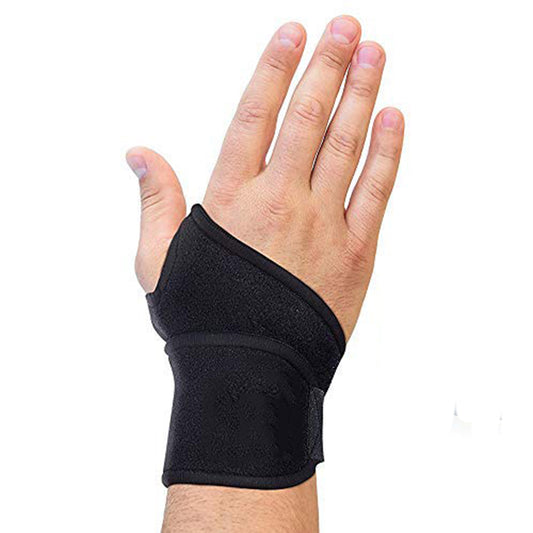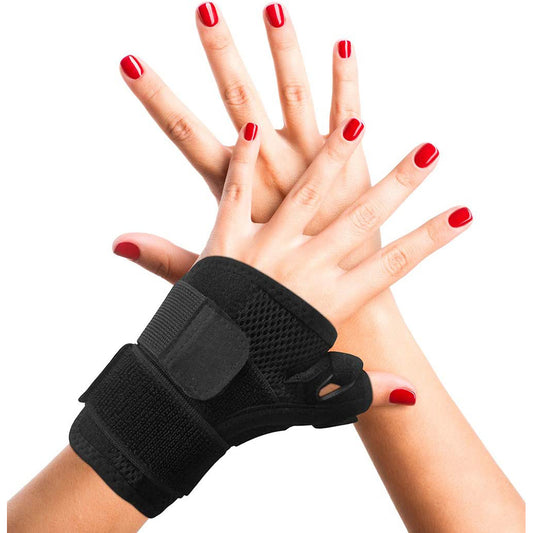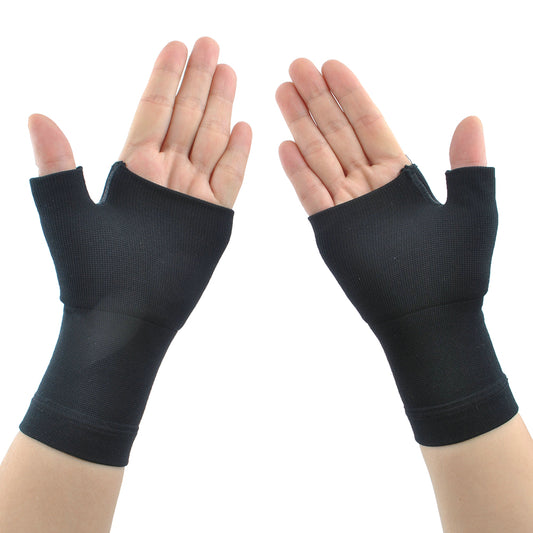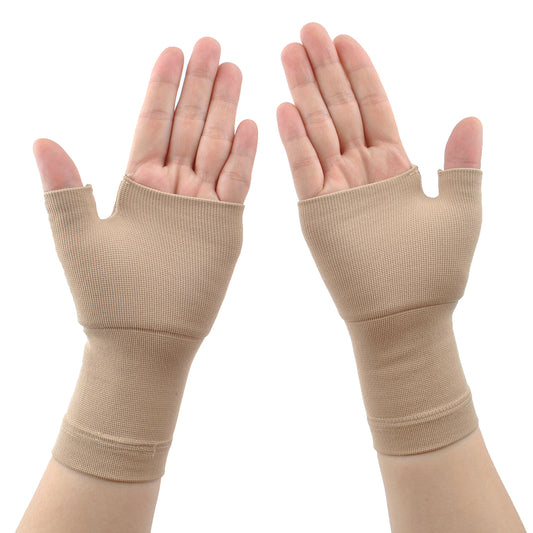-
Carpal Tunnel Wrist Brace Night & Wrist Support & Sleep Brace Fully Adjustable
Regular price $17.99 USDRegular price$25.99 USDSale price $17.99 USDSale -
Premium Lined Wrist support /Wrist Strap/Carpal Tunnel Wrist Brace/ Arthritis Hand Support -Fits Both Hands-Adjustable Fitted
Regular price $12.99 USDRegular price$20.99 USDSale price $12.99 USDSale -
Thumb Brace - Thumb Spica Splint for Arthritis, Tendonitis and More. Fits Both Right Hand and Left Hand for Men and Women. Trigger Thumb Support Braces
Regular price $22.00 USDRegular price$32.00 USDSale price $22.00 USDSale -
Compression Wrist Support - Wrist Sleeve for Wrist Pain, Carpal Tunnel - Wrist Brace
Regular price $18.99 USDRegular price$26.99 USDSale price $18.99 USDSale -
Wrist and Thumb Support - Compression Hand Sleeves- Lightweight, Breathable- Relieve Strains, Sprains, Instability, Arthritic Wrists
Regular price $18.99 USDRegular price$18.99 USDSale price $18.99 USD
Collection: Wrist Splints : Enhance Support and Alleviate Discomfort
Wrist Splints: Essential Support for Optimal Hand Health
Wrist pain can significantly affect your daily life, whether it's due to an injury, repetitive use, or an underlying health condition. Wrist Splints offer essential support and are designed to alleviate discomfort by stabilizing the wrist in a neutral position. Our comprehensive collection of wrist splints ensures you find the right support to maintain hand health and minimize pain.
Who Needs Wrist Splints?
Understanding whether you need a wrist splint starts by recognizing the activities and conditions that contribute to wrist pain. Wrist splints are ideal for:
- Individuals experiencing Carpal Tunnel Syndrome.
- Those with hand joint pain or arthritis.
- People suffering from muscle and joint pain.
- Patients diagnosed with De Quervain's Syndrome.
- Anyone experiencing wrist pain or numbness in the hand.
Whether you're typing on a computer all day, an athlete, or someone recovering from a wrist fracture, a wrist splint can offer much-needed support and relief.
Why You Need a Wrist Splint
Wrist splints help in various ways, providing stability, reducing pain, and facilitating healing. Here are some top reasons to consider a wrist splint:
1. Assist in Treating Repetitive Motion Injuries
Repetitive motion injuries, such as those from using a keyboard or gaming controller, can lead to pain and discomfort over time. A wrist splint can be part of a treatment plan to provide support to injured areas, allowing them time to heal. Learn more about a support option for repetitive motion injuries.
2. Stabilize Fractures
In the case of wrist fractures, a splint can replace or supplement a cast, providing the necessary stability while allowing for more comfort. The splint ensures the bones heal correctly without undue movement.
3. Facilitates Healing in Soft Tissue Injuries
Soft tissue injuries can benefit significantly from the stabilization offered by a wrist splint. It minimizes movement, allowing the injured muscles, tendons, and ligaments to heal effectively. Consider an adjustable splint for lasting comfort and support.
How to Identify If You Need a Wrist Splint
You may need a wrist splint if you experience any of the following symptoms:
- Persistent pain, numbness, or tingling in the wrist or hand.
- Weakness or difficulty gripping objects.
- Swelling around the wrist.
- Sharp pain during specific movements.
- Discomfort during repetitive activities or rest.
Features of Quality Wrist Splints
At ZSZBACE, we take pride in providing only the highest quality wrist splints designed with user comfort and effectiveness in mind. Key features include:
- Materials: Made from breathable and durable materials to provide comfort while maintaining the necessary rigidity.
- Adjustability: Fully adjustable straps to ensure a perfect fit for varying wrist sizes and needs.
- Usability: Designed for easy wearability with day and night applications.
Common Questions about Wrist Splints
Q: Can a wrist splint be used during sports activities?
A: Yes. Certain wrist splints are designed with athletes in mind. They provide flexibility while ensuring proper joint support to prevent injuries. Explore athletically oriented wrist splints.
Q: Is it safe to wear a wrist splint while sleeping?
A: Absolutely. Wearing a wrist splint at night can prevent involuntary movements that might aggravate injuries, allowing for restful healing.
Enhancing Life with Wrist Splints
A good wrist splint doesn't just alleviate current pain—it can also prevent future injuries. By maintaining a neutral wrist position and supporting weak areas, these essential tools improve everyday functionality and comfort.

We are the ZSZBACE brand, committed to quality manufacturing and innovative design in wrist support products. With extensive experience in R&D, our products are crafted from premium materials, and we pride ourselves on providing exceptional service and after-sales support. Discover our range of wrist support solutions today!





